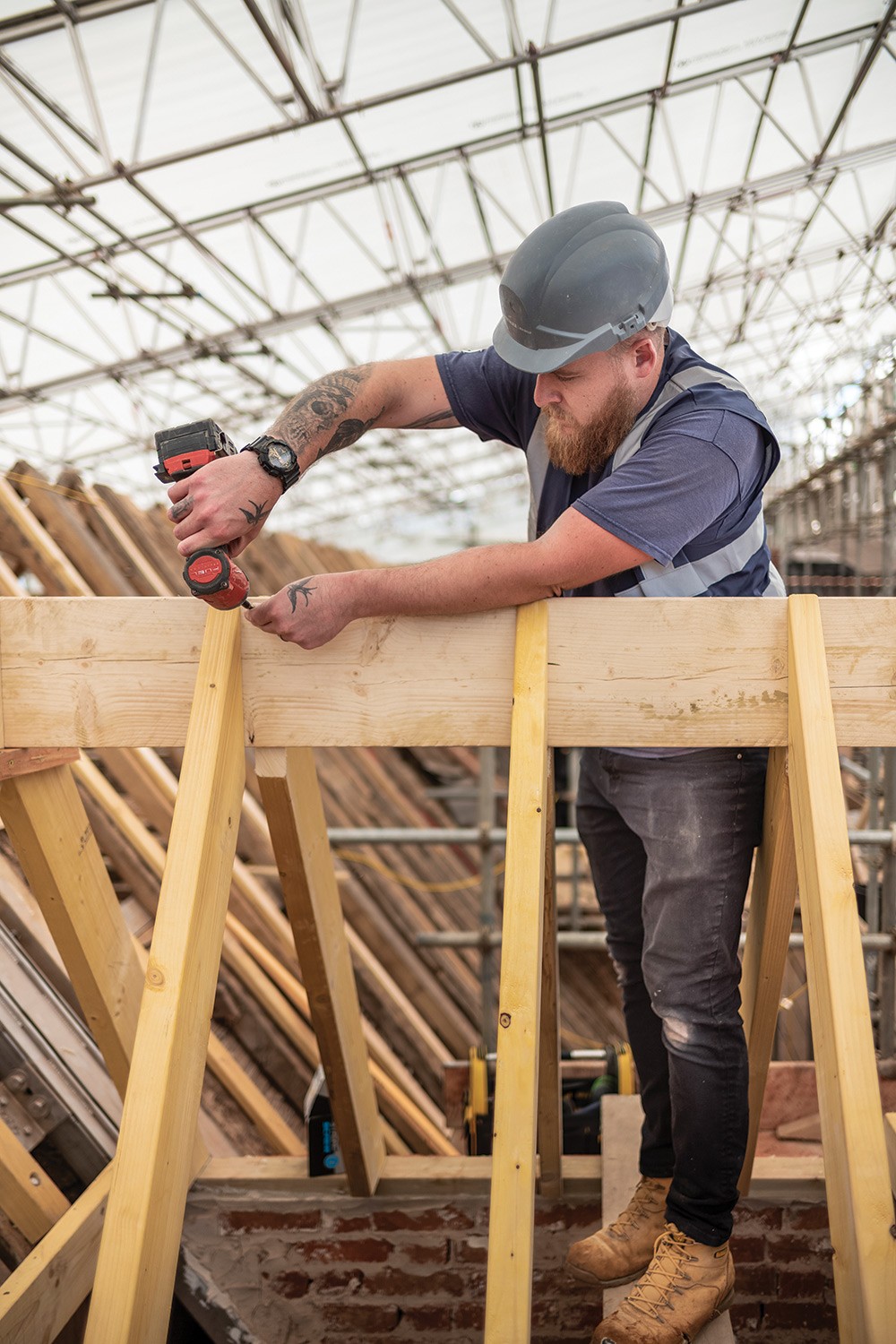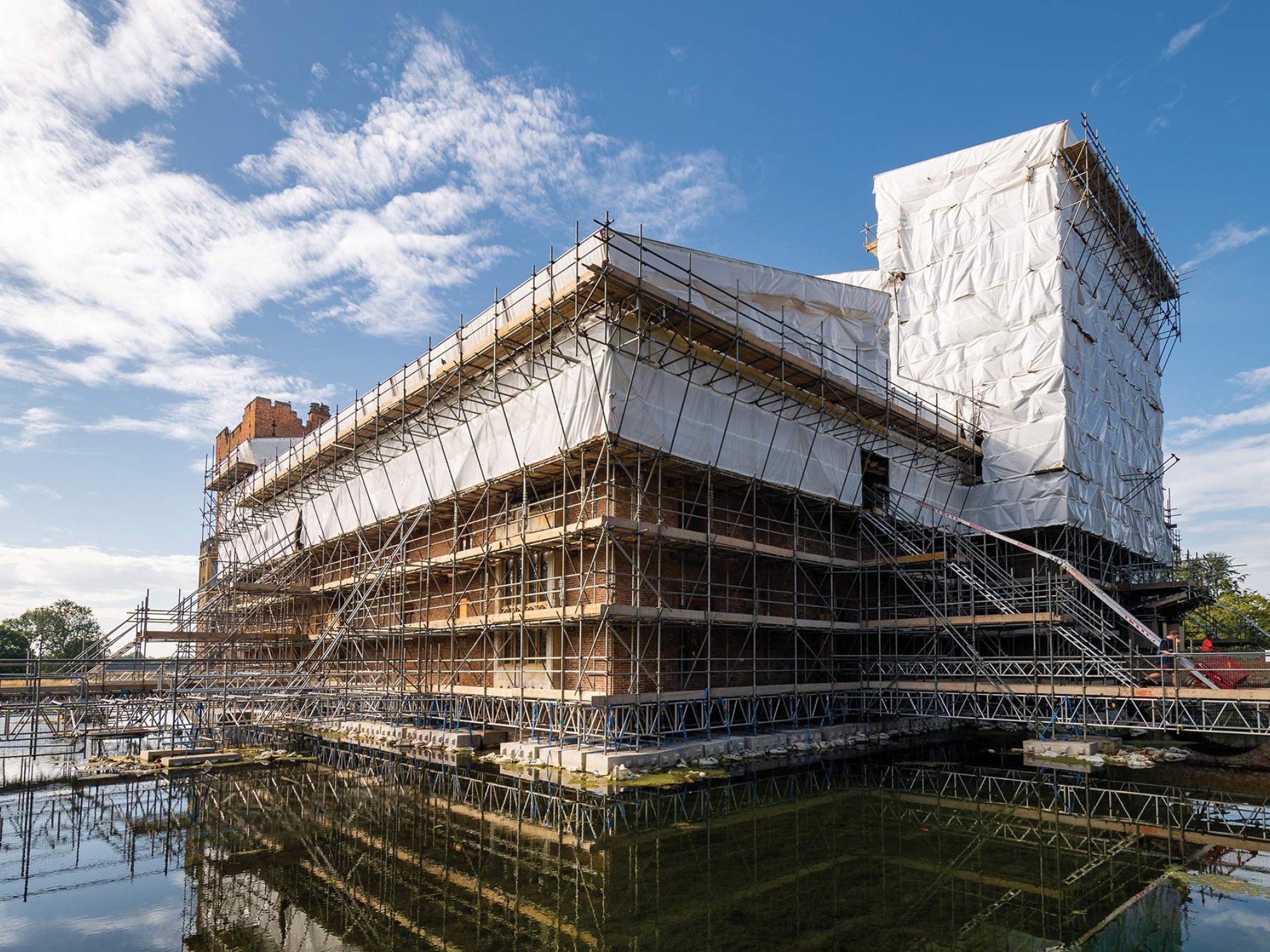
A new dawn rises over Oxburgh Hall
It’s taken five years and is one of the biggest projects ever undertaken by the National Trust, but the newly-restored Oxburgh Hall is finally seeing the light of day - and is embarking on a new chapter in its story
In the summer of 2016 a dormer window at Oxburgh Hall collapsed, sending a few tons of masonry crashing to the ground, setting off the fire alarms, and causing one of the National Trust’s most beautiful properties to be temporarily closed for safety reasons.
Initially it seemed like a relatively simple case of repair and restoration, a project you might expect when dealing with a building that’s some 500 years old. But the closer the specialists and experts looked, the more complex the situation became - a situation which eventually led to a £6 million project involving major repairs to the remaining 13 dormers, the entire roof, all 27 chimneys, and the façade of the famous medieval gatehouse.
“That’s the nature of the beast when you’re working with historic properties,” says Project Manager David White. “The more you investigate, the more things you tend to find that need attention. At Oxburgh Hall, what started out as an emergency project to replace a single dormer window grew into one of the biggest projects the National Trust has ever undertaken in this area.”
The (in)famous dormer windows were later and rather hastily-installed Victorian additions to the 15th century building and hadn’t been fully integrated into the existing roofscape - work that placed undue demands on the original structure.
“Once we had access to the roof, our investigation of the windows revealed that due to centuries of ingressive damp and deathwatch beetles the entire roof was in need of repair,” says David. “We also found that every one of the individual 27 decorative chimneys was in poor condition and unstable.”
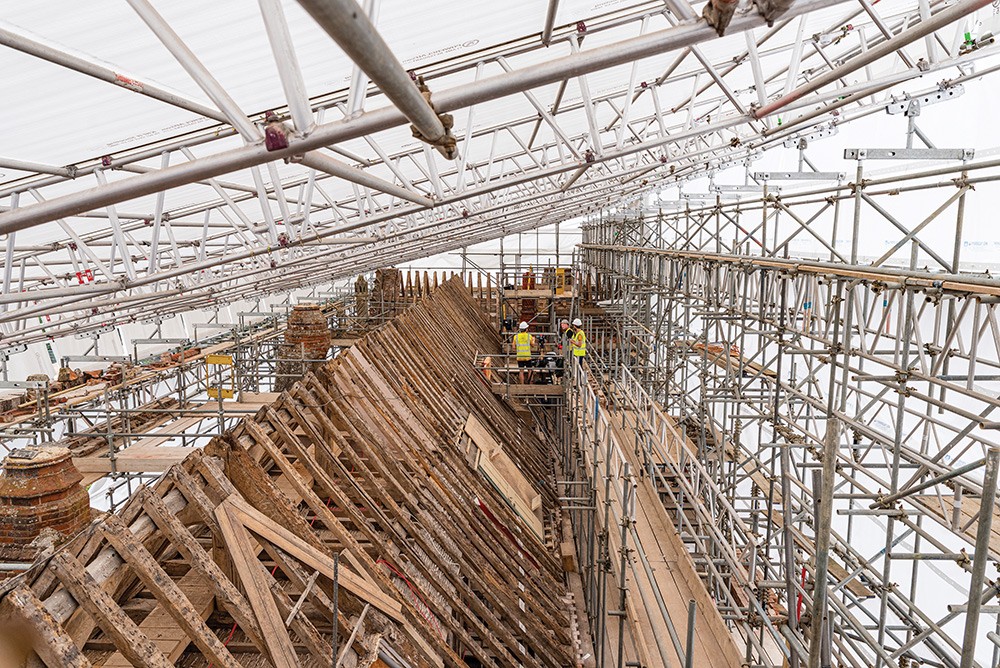
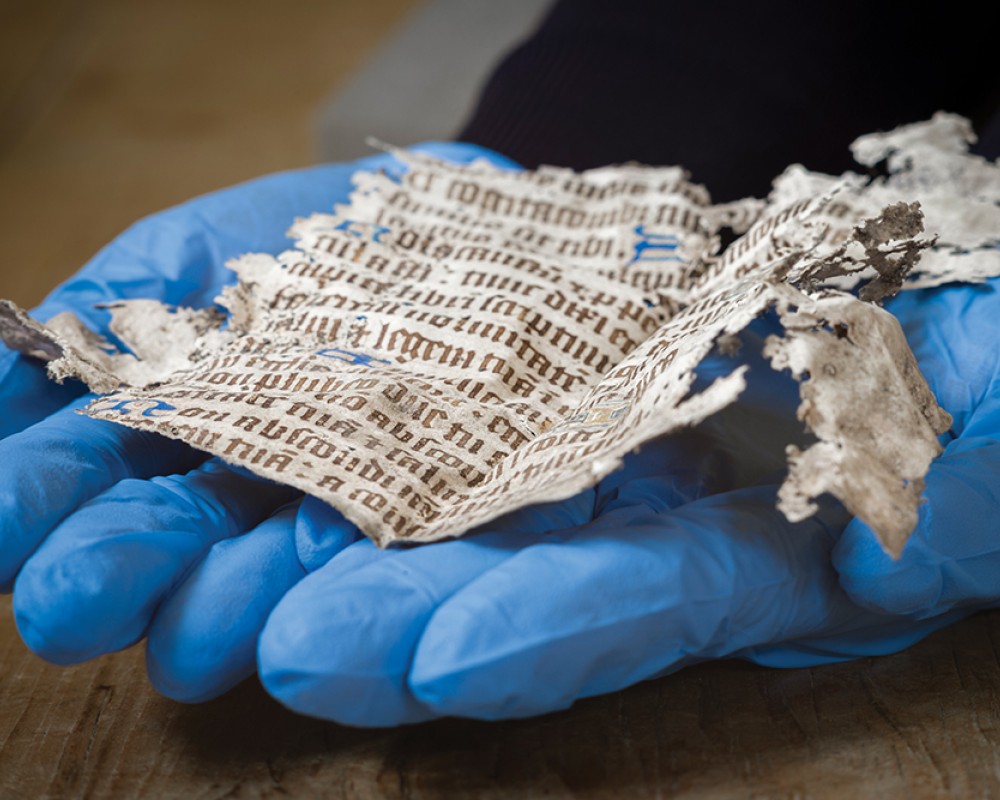
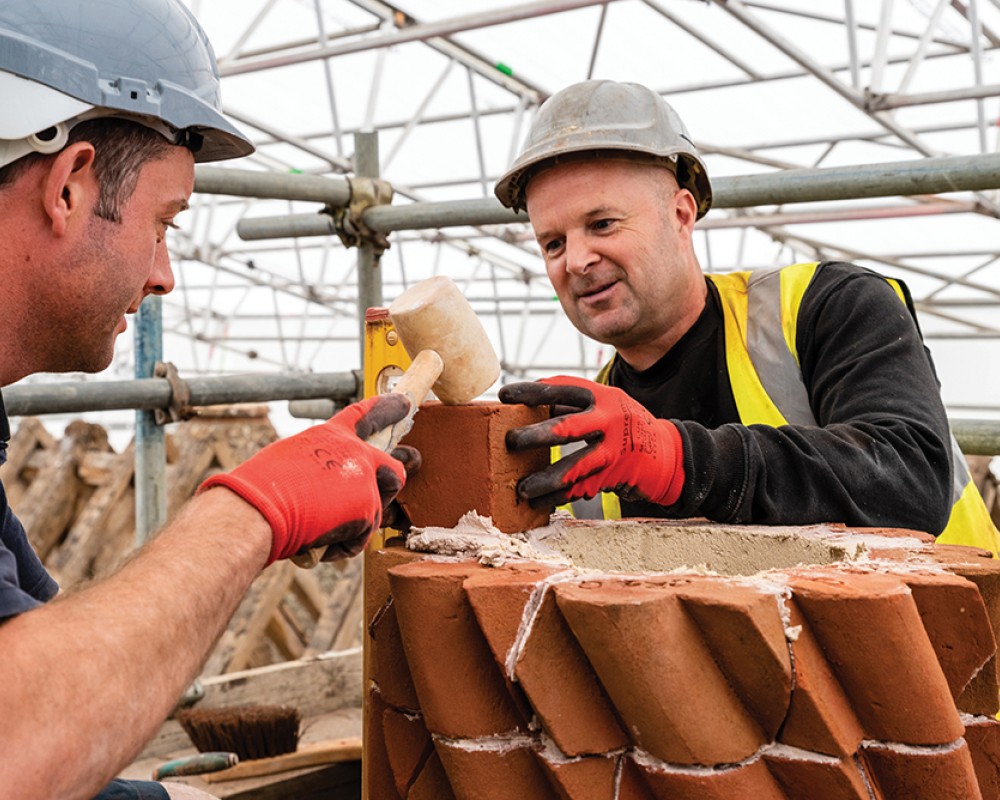
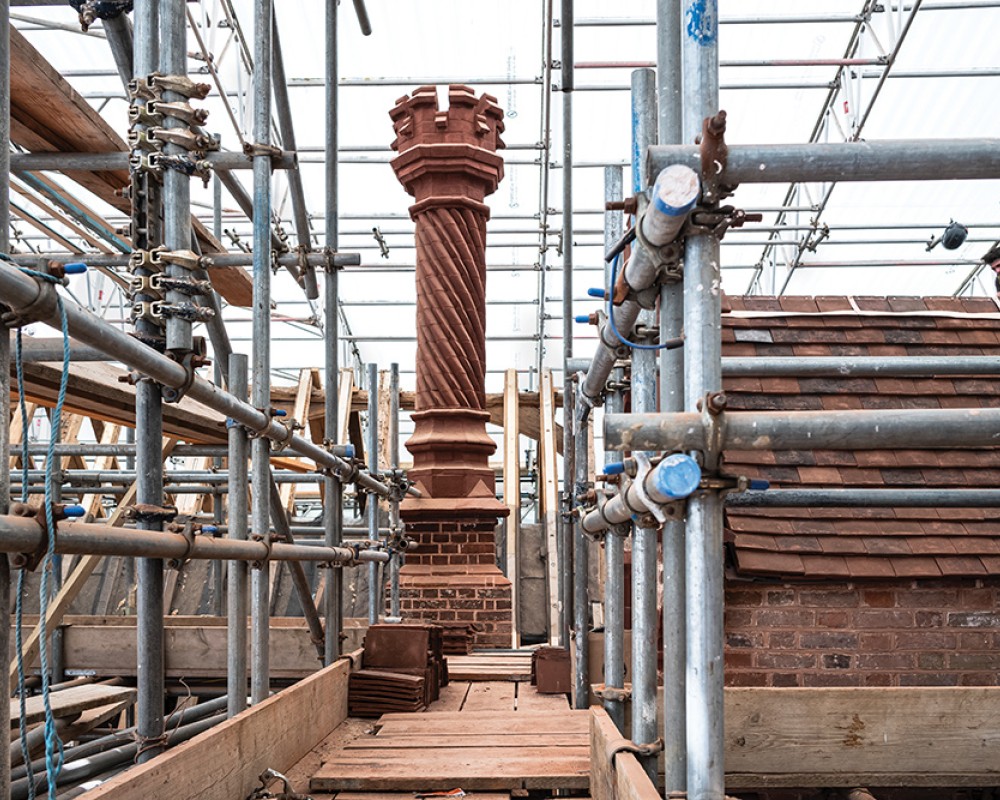
If David thought that was the end of his problems, his team were presented with yet another challenge in 2018 when pieces of later-date masonry started dropping off the original gatehouse due to the natural changes of the ground conditions over the course of several hundred years.
From a technical point of view, perhaps the most incredible part of the project has been the total covering of Oxburgh Hall under a gargantuan amount of scaffolding - which resembles a work of modern art and took some six months to erect.
“Oxburgh Hall is surrounded by a moat so it was an extraordinary feat of engineering and to our knowledge nothing like it has ever been done before,” says David. “Because of the moat’s fragile clay lining we couldn’t use traditional supports, so the scaffolding actually sits on an ingenious bed of around 800 sandbags.”
But the technical achievement of the project is now competing with its archaeological value, as the work has revealed (and literally uncovered) an incredible treasure trove of hidden wonders.
“We always suspected we’d uncover lots of interesting information about the history of the building and the people who’ve lived here,” says Cultural Heritage Curator Anna Forrest. “But I don’t think anyone thought we’d find such a wonderful hoard of fascinating artefacts.”
The removal of skirting boards revealed some fragments of wallpaper dating to the early 18th century, and a large rats’ nest was found to contain around 200 pieces of late Tudor and Elizabethan textiles in addition to parts of printed books from the 1590s.
“Thanks to the rats they’d spent hundreds of years hidden away protected from light and moisture,” says Anna. “They were very dirty but they were in an incredible state of preservation. Although many of them were only fingernail-sized they’ve given us a fabulous insight into the clothes people were wearing and the books they were reading, and it’s really captured everybody’s imagination.”
The team even found an entire book of Psalms with a beautifully-ornamented leather cover in a roof space void - a book that’s since been dated to 1569.
“The first few pages were a little bit nibbled, but the book was in a remarkable condition,” says Anna. “This isn’t fine art or gold, but it’s just as exciting. We recently found a fragment from a magazine published in 1737, and it’s that kind of social history that people can really identify with.”
And it’s a history that will form an integral part of Oxburgh Hall’s forthcoming Endurance exhibition, which traces the changing fortunes of the house of the Bedingfeld family who built the property in 1482 and live there to this day.
“Although the name of the exhibition was chosen some time ago, it’s become even more appropriate over the last few years,” says Property Curator Lynsey Coombs. “This beautiful building has a quite extraordinary history, and we want to bring that to life and make it much more immersive. It’s well known that the house has a ‘priest’s hole’ but few people realise what that actually means - and what it must have been like to be persecuted for your faith.”
As the mammoth project comes to a conclusion and the scaffolding finally starts to be removed, it will be something of a revelation for Lynsey.
“I started working at Oxburgh in 2017 so I’ve never actually seen the hall in ‘real life’ without being surrounded by scaffolding,” she says. “Now the work is nearing completion we can already see what a tangible difference it’s made to the house - and it’s really exciting. Especially for our visitors, who’ll be experiencing the start of the next chapter in the long story of Oxburgh Hall.”
For the latest information on the project and details on opening arrangements, please visit the website at www.nationaltrust.org.uk/oxburgh-hall
Image credits: Nicolas Farka & Mike Hodgson
